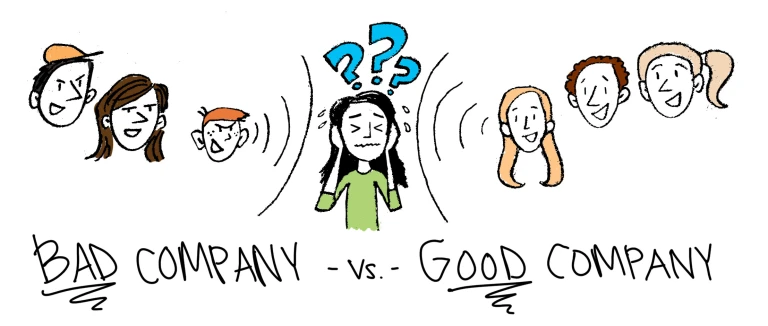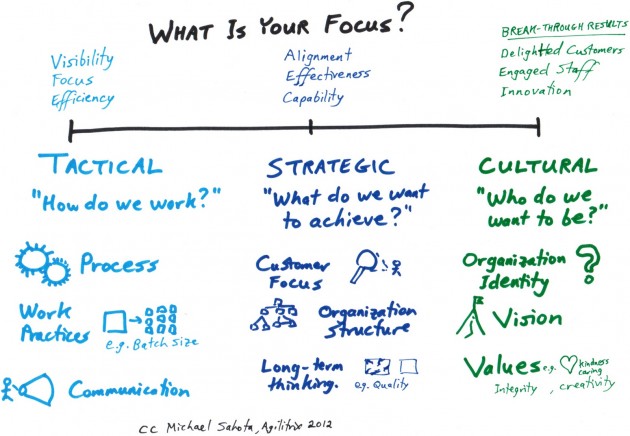The Difference between a Good and Bad Place to Work.

I enjoy reading the insights I can find from Ben Horowitz (he was founder/CEO of Opsware and nowadays is founder/partner at Andreessen-Horowitz which manages near $3B). I recently read one of his blog posts where he provided a member of his team with his view of the difference between a good place to work and a bad place to work:
“In good organizations, people can focus on their work and have confidence that if they get their work done, good things will happen for both the company and them personally. It is a true pleasure to work in an organization such as this. Every person can wake up knowing that the work they do will be efficient, effective and make a difference both for the organization and themselves. These things make their jobs both motivating and fulfilling.
In a poor organization, on the other hand, people spend much of their time fighting organizational boundaries, infighting and broken processes. They are not even clear on what their jobs are, so there is no way to know if they are getting the job done or not. In the miracle case that they work ridiculous hours and get the job done, they have no idea what it means for the company or their careers. To make it all much worse and rub salt in the wound, when they finally work up the courage to tell management how fucked up their situation is, management denies there is a problem, then defends the status quo, then ignores the problem.”
For the next few hours, I just kept thinking about how he nailed these definitions so well. It also got me thinking about how I would characterize my own employment history and those described to me by some of my friends. It certainly reinforced just how important culture is to an organization and to the employees.
What is Culture?
Wikipedia defines Organizational culture as the collective behavior of humans who are part of an organization and the meanings that the people attach to their actions. Culture includes the organization values, visions, norms, working language, systems, symbols, beliefs and habits. It is also the pattern of such collective behaviors and assumptions that are taught to new organizational members as a way of perceiving, and even thinking and feeling. Organizational culture affects the way people and groups interact with each other, with clients, and with stakeholders.
A Strong culture is said to exist where staff respond consistently to stimulus because of their alignment to organizational values. In such environments, strong cultures help firms operate like well-oiled machines, engaging in outstanding execution with only minor adjustments to existing procedures as needed.
Conversely, there is weak culture where there is little alignment with organizational values, and control must be exercised through extensive procedures and bureaucracy.
Why is My Company’s Culture Important?
In another post, Horowitz touches writes about designing a way of working that will:
- Distinguish you from competitors
Corporate Culture is The Only Truly Sustainable Competitive Advantage.
Given enough time and money, your competitors can duplicate almost everything you’ve got working for you. They can hire away some of your best people. They can reverse engineer your processes. The only thing they can’t duplicate is your culture.
I love this series on how easy it is to poach tech talent... Guy bumps into a competitor’s star engineer at a trade event:
“Would you come work for us if we gave you $1 million/year?”
“I would.”
“How about $50,000/year?”
“What do you think I am?
“We’ve already established that. Now we’re negotiating.”
While not everyone is for sale, enough are to make you vulnerable.
- Ensure that critical operating values persist such as delighting customers or making beautiful products
Everyone needs to be working toward the same mission and goals. Clearly defined roles and responsibilities makes for more efficient pursuit of those goals.
- Help you identify employees that fit with your mission
I read over and over that you should always only hire the best… and not accept less. But how do you define the best? Does that mean the most intelligent or potentially most productive individual? Are you looking for someone that matches the specific skills listed on a job description?
My buddy Ed and I once had a discussion about how to build a team of developers. I asked if he was going to blow his budget and get someone senior level SME to move his projects along. His take was that team fit was his number one priority, and wasn’t interested in having a rock star prima donna. He said he found smart motivated people can figure out the technical solutions, but the bad apples will cause more pain than the value they provide. This was detailed really well in the book The No Asshole Rule (unfortunately I lent my copy to an asshole who never returned it).
Tony Hsieh’s (founded and sold both LinkExchange and Zappos) advice on how to hire the right people to build a great company culture:
"From the beginning, company culture was always important. Is this someone I would choose to hang out with or grab a drink with, if we weren’t in business? If the answer was no, we wouldn’t hire them."
How does Culture relate to Strategy and Execution?
I love this diagram that Michael Sahota from agilitrix came up with:

It makes you think about how to view many of your important initiatives, especially why you want to do something and the relative importance of the outcome. If you are introducing a new activity, you can align it with one of the 3 aspects:
- Tactics – “How do we work?” is about day to day practices and process elements. These are things that a team or organization can adopt.
- Strategy – “What do we want to achieve” is about aligning the company around key goals and initiatives.
- Culture – “Who do we want to be?” is about clarifying the organizations reason for existing as well as it’s values and vision.
Culture is the foundation for Strategy and Tactics, and can lead to better efficiency in delivering activities in those groups. If you are part of an organization where it is part of the culture to regularly set widely understood goals with measurable objectives, then there likely won’t be unnecessary barriers to deliver and assess results.
Conversely, it is much harder to devise strategy and/or execute work when the mission is not widely and consistently understood.
Making a bad organization into a good organization.
When Ben Horowitz realized that one of his middle managers had neglected to meet with his subordinates for 6 months, he explained his displeasure with the situation and used the power of his leadership position to demand change (through threat of termination if the problem was not corrected within 24 hours).
The transformation of an organization (in Horowitz's terms of bad to good) likely will require some sort of culture change. A lot of time we'll see a big reorganization or new managers specifically introduced into a company to be a catalyst for culture change.
- A leadership providing a concrete vision of the future
- Management tools in place to track/measure execution
- Ruthless use of both positive and negative reinforcement
-
Having a strong culture is not the end all be all. There are tons of companies with great cultures that don't become financially viable. You need the right product mix/business model if you are going to succeed. And there are plenty of companies with weak cultures that make boatloads of money (often blue oceans).
- Culture is the one thing you can control in business. It's so tough to accurately manage customers expectations/actions and predict market conditions, but it much easier to set the tone to effectively manage operational activities (such as customer service, engineering, fulfillment, etc.) within your company.
I would love to always work for Ben Horowitz's definition of a "good organization", because those are the organizations that maximize on the opportunities they can fully control. - Relativity has a lot to do with how you perceive the culture you are in.
After spending many years in consulting, I'd often view an organization's culture as "what it takes to get something done here". What do I need to do and who do I need to involve/appease to get the desired result?
As an full time employee for a large company the past 5+ years, my perspective is more about aligning my objectives and execution with the corporate vision.
- A lot of people I know consider perks (like having company provided alcohol/entertainment, company wide video game tournaments, hackathons, etc.) as culture. While it may be a great reward that distinguishes a company from others, they will not establish a core value that drives the business and help promote in perpetuity. They are not specific with respect to what your business aims to achieve.
- When I worked at Dell, one of messages pushed down form the top was their commitment to continuous improvement (through Six Sigma). I have since seen a number of companies that don't systematically prioritize process improvements and their teams lose efficiency from repeatedly facing the same common problems.
